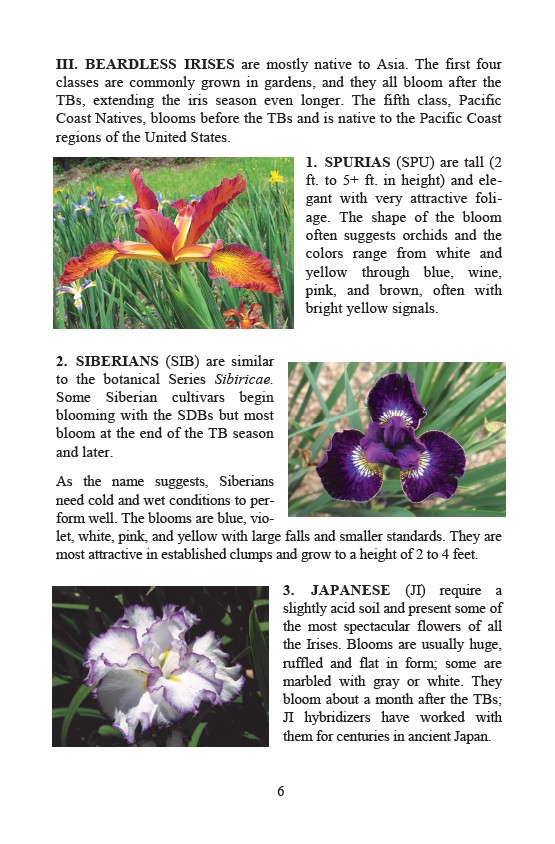
III. BEARDLESS IRISES are mostly native to Asia. The first four
classes are commonly grown in gardens, and they all bloom after the
TBs, extending the iris season even longer. The fifth class, Pacific
Coast Natives, blooms before the TBs and is native to the Pacific Coast
regions of the United States.
6
1. SPURIAS (SPU) are tall (2
ft. to 5+ ft. in height) and ele-gant
with very attractive foli-age.
The shape of the bloom
often suggests orchids and the
colors range from white and
yellow through blue, wine,
pink, and brown, often with
bright yellow signals.
2. SIBERIANS (SIB) are similar
to the botanical Series Sibiricae.
Some Siberian cultivars begin
blooming with the SDBs but most
bloom at the end of the TB season
and later.
As the name suggests, Siberians
need cold and wet conditions to per-form
well. The blooms are blue, vio-let,
white, pink, and yellow with large falls and smaller standards. They are
most attractive in established clumps and grow to a height of 2 to 4 feet.
3. JAPANESE (JI) require a
slightly acid soil and present some of
the most spectacular flowers of all
the Irises. Blooms are usually huge,
ruffled and flat in form; some are
marbled with gray or white. They
bloom about a month after the TBs;
JI hybridizers have worked with
them for centuries in ancient Japan.